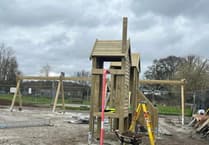AN ANCIENT Chinese ‘cash’ coin found by metal detectorists in a field near Buriton is helping make the case for a bustling trade with China as far back as medieval times
The copper alloy coin weighs 0.12 ounces (3.6g) and has a diameter of just under an inch (25mm).
It is thought to have been minted between 1008 and 1016, during the reign of Emperor Zhenzong of the Northern Song dynasty.
The Song dynasty lasted from 960, when Edgar ‘the Peaceful’ was king of England, to 1127 when the monarch was Henry I.
But the coin probably arrived here around the 13th or 14th century, when luxury Chinese pottery was being widely imported.
It matches one from a similar period found 200 miles away in Cheshire in 2018.
This latest find adds weight to the idea that medieval trade between Asia and England was far busier than suspected.
University of Cambridge archaeologist Dr Caitlin Green also says neither was part of a buried collection, or found among other ‘exotic’ relics from East Asia.
This means it is likely they were accidentally dropped or lost as their owner went about their daily business.
Dr Green said: “Most Chinese coins found here are post-1600 – these are the only medieval-era finds and I suspect they did not arrive then, but perhaps in the 14th century.”
She added that Song dynasty coins were used in China for hundreds of years after the dynasty ended.
Buriton is only about 20 miles from the only confirmed find of imported medieval Chinese pottery.
The blue-and-white porcelain shard found in Winchester is from a late 14th-century cup or bowl.
The Buriton field has already produced a handful of finds dating from around, and during, the medieval period.




